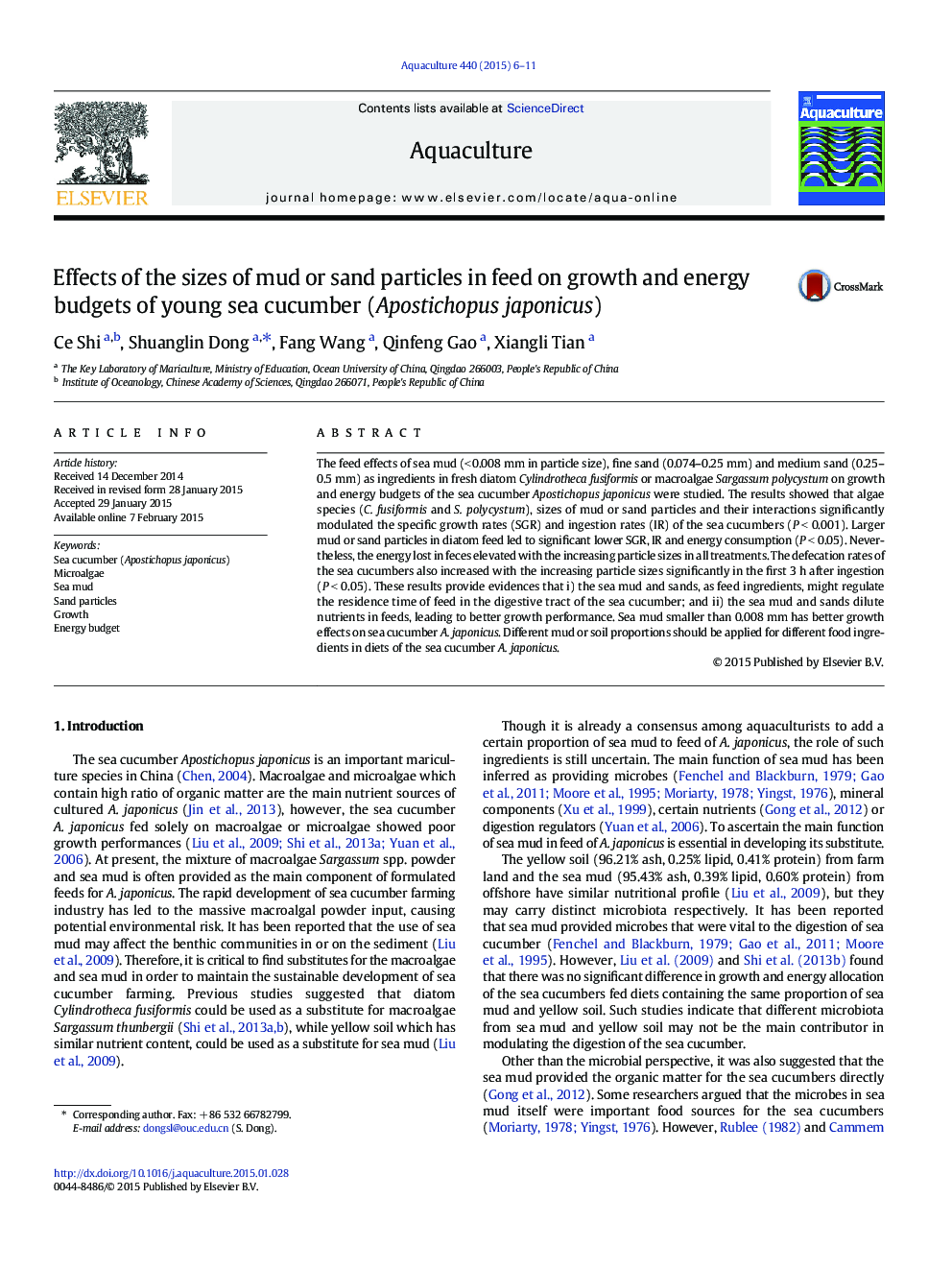| Article ID | Journal | Published Year | Pages | File Type |
|---|---|---|---|---|
| 2421628 | Aquaculture | 2015 | 6 Pages |
•The sizes of sand or mud particles in feed are critical for sea cucumbers.•Fine particles prolonged the residence time of food in the digestive tract.•Fine particles had better nutrient dilution effect and better growth rates.
The feed effects of sea mud (< 0.008 mm in particle size), fine sand (0.074–0.25 mm) and medium sand (0.25–0.5 mm) as ingredients in fresh diatom Cylindrotheca fusiformis or macroalgae Sargassum polycystum on growth and energy budgets of the sea cucumber Apostichopus japonicus were studied. The results showed that algae species (C. fusiformis and S. polycystum), sizes of mud or sand particles and their interactions significantly modulated the specific growth rates (SGR) and ingestion rates (IR) of the sea cucumbers (P < 0.001). Larger mud or sand particles in diatom feed led to significant lower SGR, IR and energy consumption (P < 0.05). Nevertheless, the energy lost in feces elevated with the increasing particle sizes in all treatments. The defecation rates of the sea cucumbers also increased with the increasing particle sizes significantly in the first 3 h after ingestion (P < 0.05). These results provide evidences that i) the sea mud and sands, as feed ingredients, might regulate the residence time of feed in the digestive tract of the sea cucumber; and ii) the sea mud and sands dilute nutrients in feeds, leading to better growth performance. Sea mud smaller than 0.008 mm has better growth effects on sea cucumber A. japonicus. Different mud or soil proportions should be applied for different food ingredients in diets of the sea cucumber A. japonicus.
